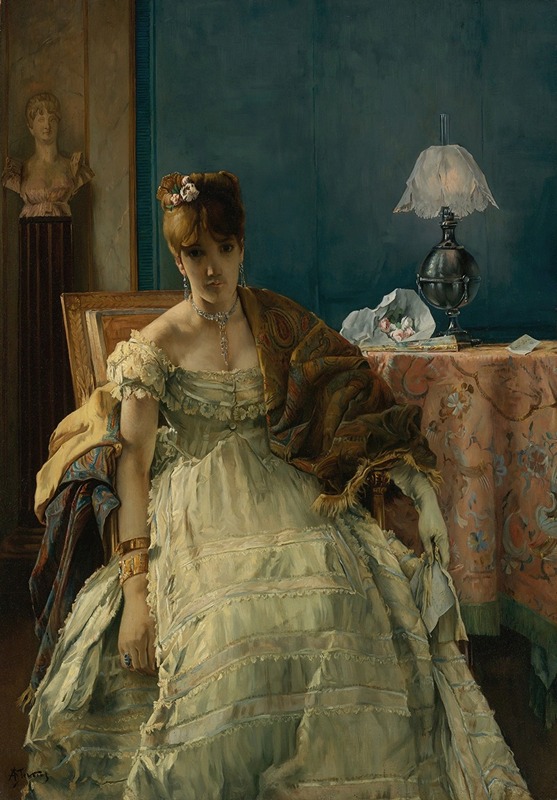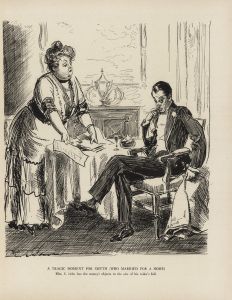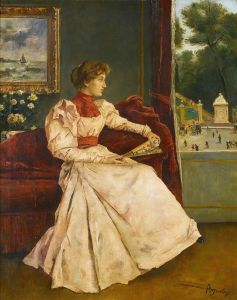
Lovelorn
A hand-painted replica of Alfred Stevens’s masterpiece Lovelorn, meticulously crafted by professional artists to capture the true essence of the original. Each piece is created with museum-quality canvas and rare mineral pigments, carefully painted by experienced artists with delicate brushstrokes and rich, layered colors to perfectly recreate the texture of the original artwork. Unlike machine-printed reproductions, this hand-painted version brings the painting to life, infused with the artist’s emotions and skill in every stroke. Whether for personal collection or home decoration, it instantly elevates the artistic atmosphere of any space.
Alfred Stevens, a renowned Belgian painter of the 19th century, is celebrated for his exquisite portrayal of women and domestic interiors. One of his notable works, "Lovelorn," exemplifies his mastery in capturing the subtle nuances of emotion and the elegance of his subjects. Painted during a period when Stevens was at the height of his artistic prowess, "Lovelorn" reflects the artist's keen observation of contemporary society and his ability to convey complex emotional states through his art.
"Lovelorn" depicts a young woman seated in an opulent interior, characterized by its rich textures and detailed furnishings, which are hallmarks of Stevens' style. The woman appears deep in thought, her expression conveying a sense of melancholy or longing, which aligns with the painting's title. Stevens' attention to detail is evident in the rendering of the woman's attire and the surrounding decor, showcasing his skill in depicting the luxurious fabrics and intricate patterns that were fashionable during the era.
Alfred Stevens was born in Brussels in 1823 and received his artistic training at the Académie Royale des Beaux-Arts in Brussels and later in Paris. His career flourished in Paris, where he became associated with the artistic circles of the time and developed a style that combined elements of realism with a refined elegance. Stevens was particularly known for his ability to capture the essence of modern life, often focusing on the lives and emotions of women in the bourgeois society of the 19th century.
The themes explored in "Lovelorn" are consistent with Stevens' broader body of work, which frequently delves into the inner lives of women and the societal expectations placed upon them. His paintings often reflect the tension between personal desires and societal norms, a subject that resonated with many of his contemporaries and continues to be relevant today.
Stevens' work was well-received during his lifetime, earning him numerous accolades and a prominent place in the art world of his time. His paintings were exhibited widely, and he was awarded several honors, including the Legion of Honor in France. Despite his success, Stevens' work fell into relative obscurity after his death in 1906, but has since been rediscovered and appreciated for its artistic merit and historical significance.
"Lovelorn" is a testament to Stevens' ability to convey emotion and narrative through his art. The painting invites viewers to contemplate the inner world of its subject, offering a glimpse into the complexities of human emotion and the societal context in which it was created. Today, Alfred Stevens is recognized as a significant figure in 19th-century art, and his works, including "Lovelorn," continue to be studied and admired for their technical skill and emotional depth.


















